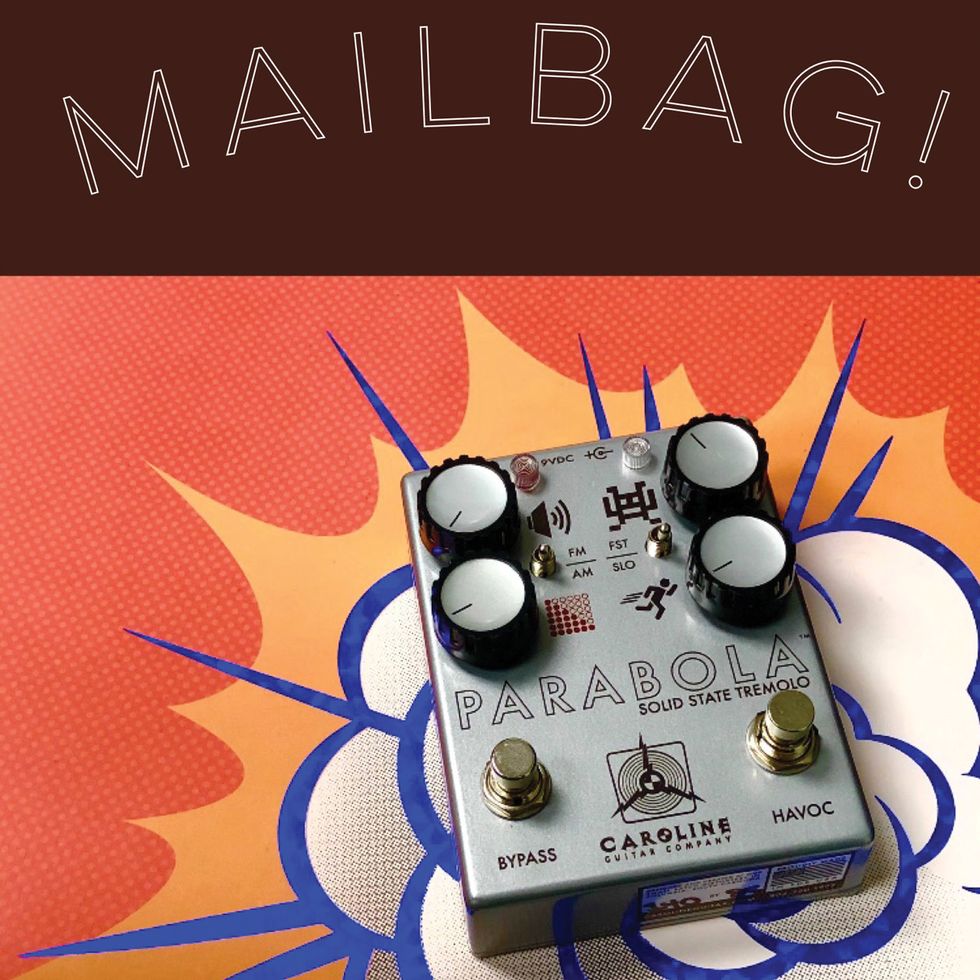Thanks to State of the Stomp’s readers and Instagram followers for these questions!
Q: A philosophical question: If you accept the premise that an audience at a gig can’t really tell the difference between a digital modeling amp and pedals, effects, and analog gear (whether the digital gear has gotten so good, or due to a lack of discerning ears), why even bother with analog gear anymore?
A: Here’s why I would bother: I would not accept that premise. We can do a quick A/B test and we both might even say they sound the same. But in a live setting, a guitar player playing through pedals and a tube amp will have more “heft” and “weight” in a mix than any emulator I’ve heard over the last 30 years. I wonder if there’s both a content and a wavelength issue? Perhaps it’s because there’s richer harmonic content launching from speaker cabinets rumbling 10 to 15 feet behind an artist, reinforcing what the audience hears from the PA firing forward.
But here’s the more relevant issue: Does it matter to you? For me, there’s nothing quite like the dynamic response of good gear. Rolling back your guitar volume through pedals and amps running at high gain, where you can directly feel how your pressure on the strings will change the current that your magnets send to the speakers.… To be able to play lightly or dime that control and dig in can feel like having a superpower—like telekinesis, where I could gently turn the pages in a book across the room, or knock the walls down.
Q: What’s your take on “selling the sizzle” in the effects biz? Do buyers still care about the idea of the “magic ear” in 2018, or has the mysticism died down?
A: I’m grateful for the forum era, where people are game to puncture internet hype after hearing stories of designers with “magical ears,” only to discover it’s just a TS with a diode swap or a blob of goop on another company’s pedal. Our industry is full of electronic designers who couldn’t tell you which side of a diode is the cathode, but somehow are comfortable marketing themselves as mad geniuses. I can only agree on the madness part.
What’s more real than “magic ears” is when you like a designer’s work and you trust their judgment. You like their applied ideas about control and equalization, compression or dynamics. You trust that they evaluated the circuits and components with scrutiny, accepted evidence that guided their decisions, and acted towards creating something that can inspire you.
Q: Given your experiences as a musician and in business, do you have advice for musicians who want to turn their original music into a career? Are there business truths from the pedal industry that artists would do well to follow?
A: One thing that makes me wince is finding old promotional kits for bands from years ago, and reading vague, puke-worthy pablum like “(insert band) has a wide mix of influences, but a high-energy style and groove that’s entirely their own.” If you have something like that in your kit, destroy it now. Burn it with fire.
When a band describes their work that way, they’re telling me nothing except that they lazily hope to fool somebody. They want you to imagine them as what you want instead of what they are. Instead, try honesty. Tell the world what your work might sound like to a new listener. Own the artists and genres that influenced you, the show you’ll be putting on, and be awesome and thorough at it. Be willing to lose potential customers who wouldn’t be interested, and instead focus on making your work terrific and meaningful for the people who might be.
Q: How do you come up with pedal names?
A: I think this relates to the question about original music. Years after it mattered, we stumbled upon a way to evaluate potential band names. Imagine meeting a physically attractive stranger. In conversation, it comes up that you’re in a band. They say, “Oh, what’s it called?” Now, imagine saying your band name in response. Does that make you feel good? Or is it something you feel compelled to explain, shrug about, or apologize for? If you have to do those things, you might need a better name. Your band name should be the nation on the Olympic uniform you’re wearing. It should make you feel good about the work you get to show. So when we had to name our tremolo, Parabola was the easy winner. It made me feel cool saying it.
Q: How do you know when a design is done?
A: In my high school, I took a ceramics class. One day, I formed a simple red clay bowl, and used the end of a small wooden chisel to form a ring of small shark-tooth shaped indentations on its surface. I was about to begin adding all kinds of ornamentation and colored glazes when my teacher came over and said, “Stop. Right now. Do not mess this up. Simply clear coat the inside and clean up your station.”
I struggle with this every time we work on something, but when it’s ready, I can hear her voice again.










![Rig Rundown: Russian Circles’ Mike Sullivan [2025]](https://www.premierguitar.com/media-library/youtube.jpg?id=62303631&width=1245&height=700&quality=70&coordinates=0%2C0%2C0%2C0)
















